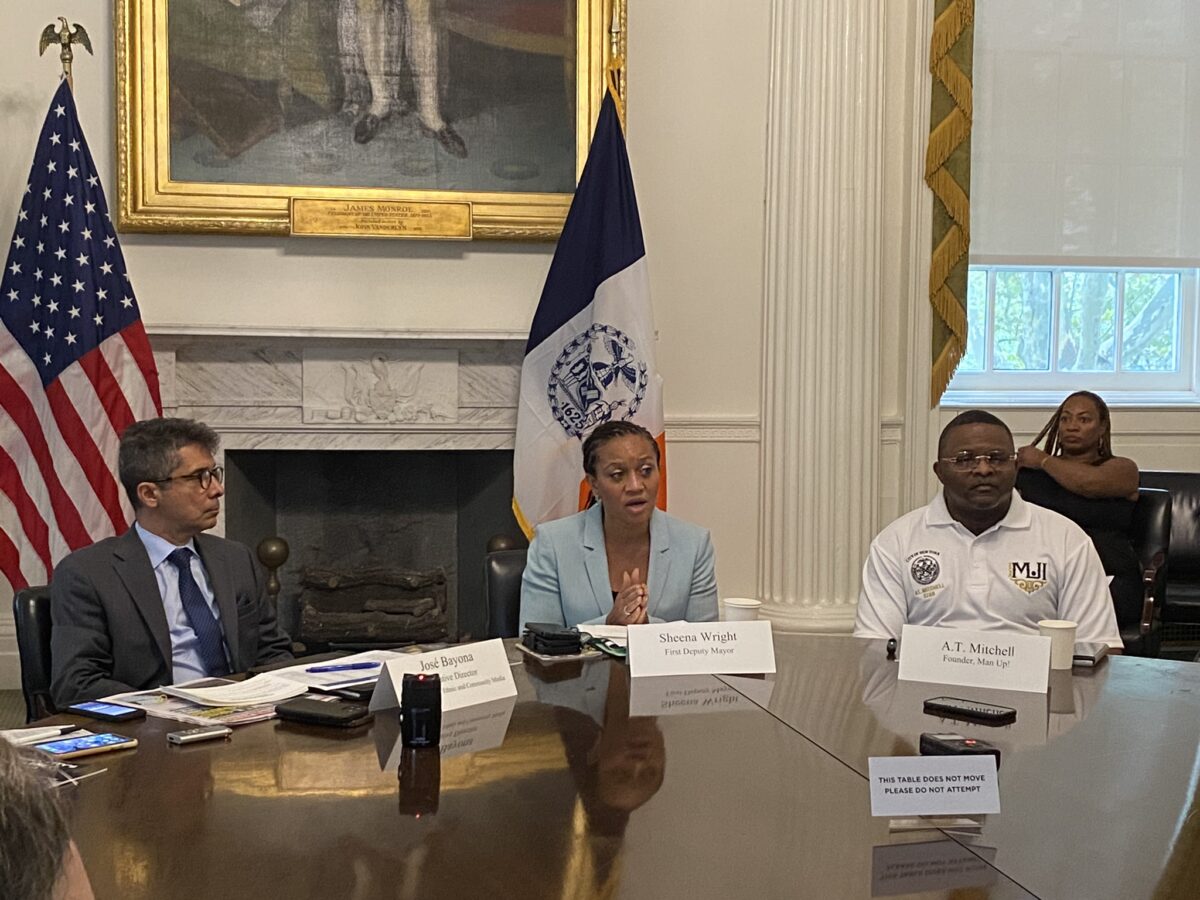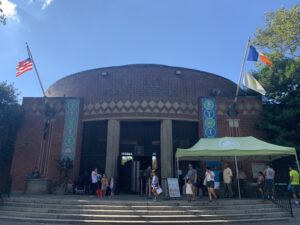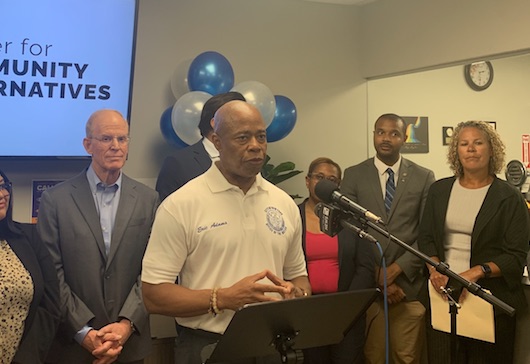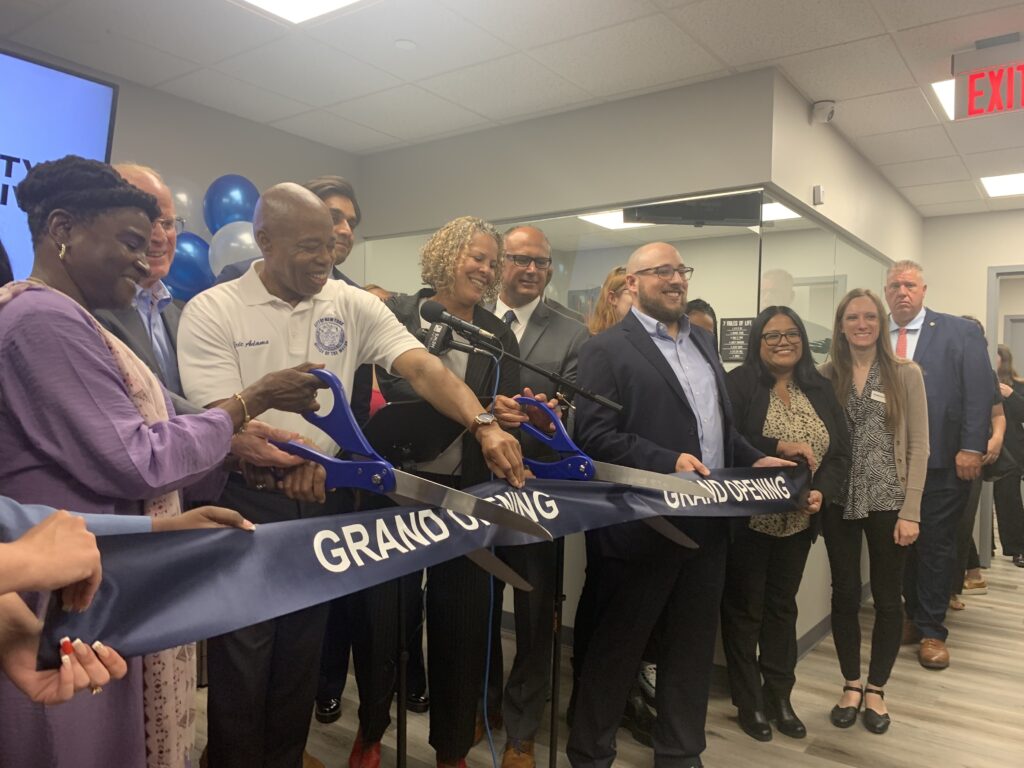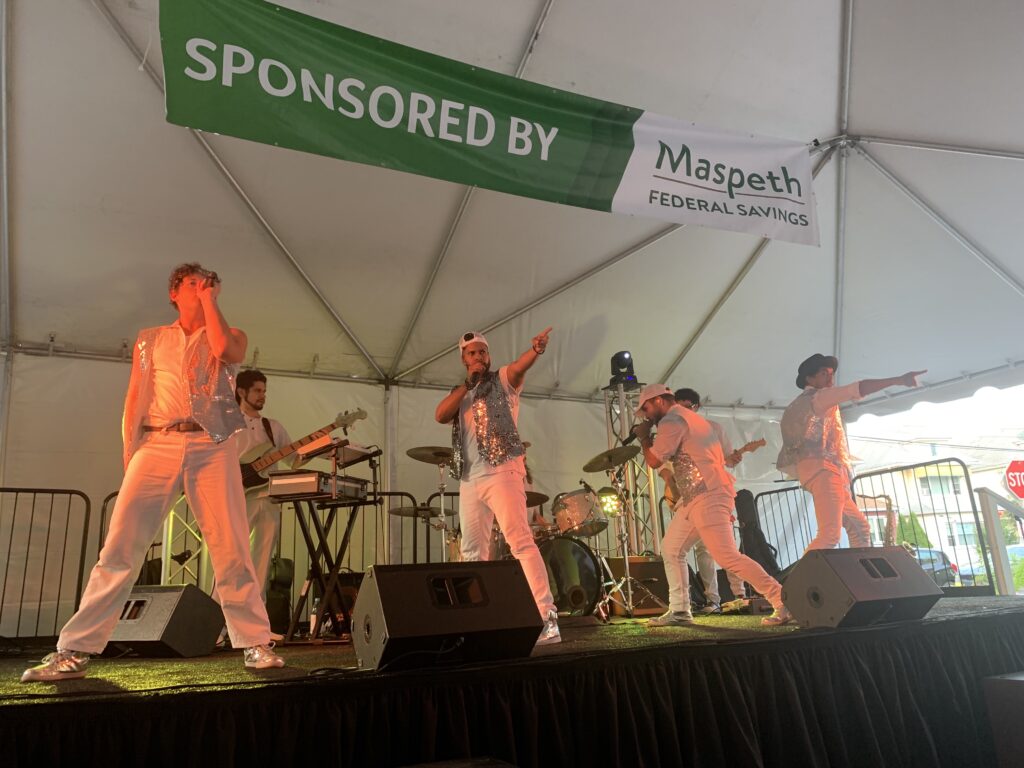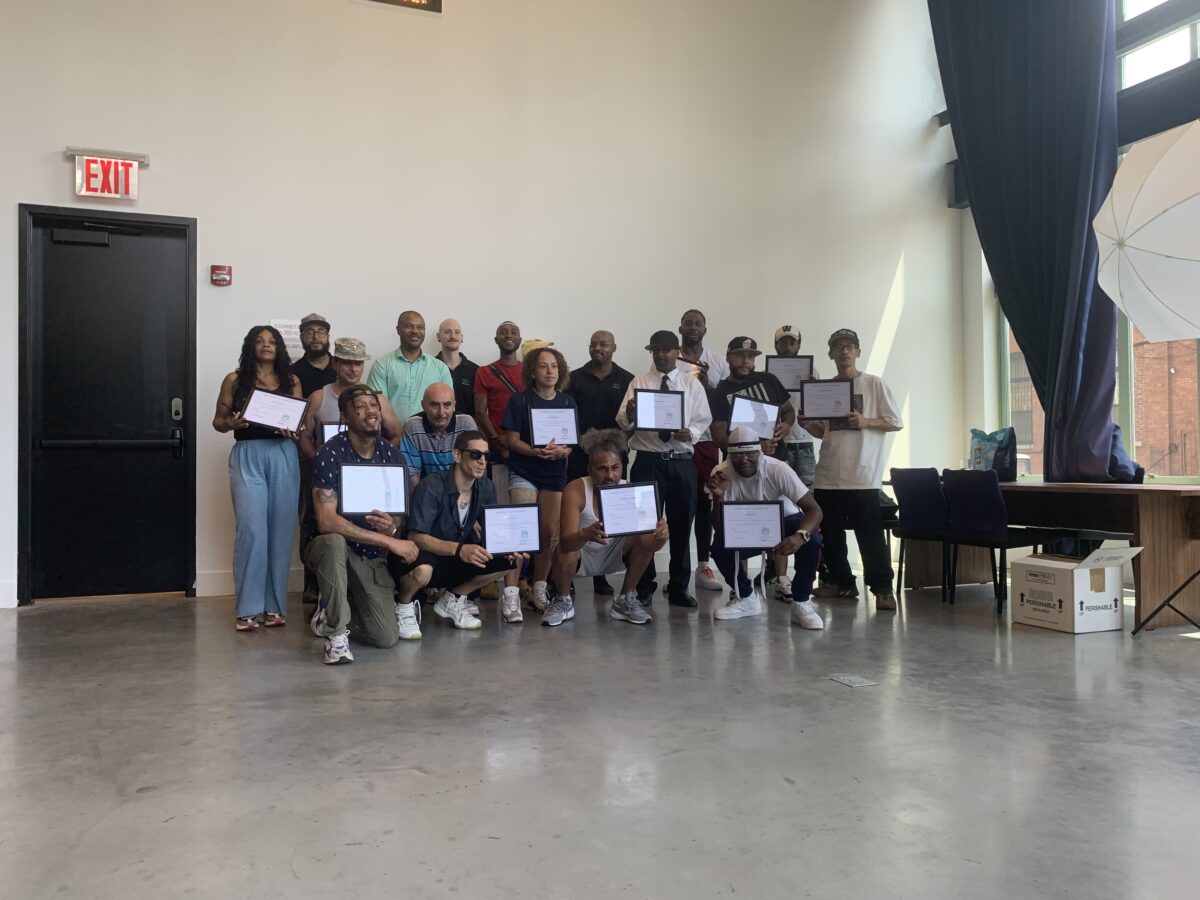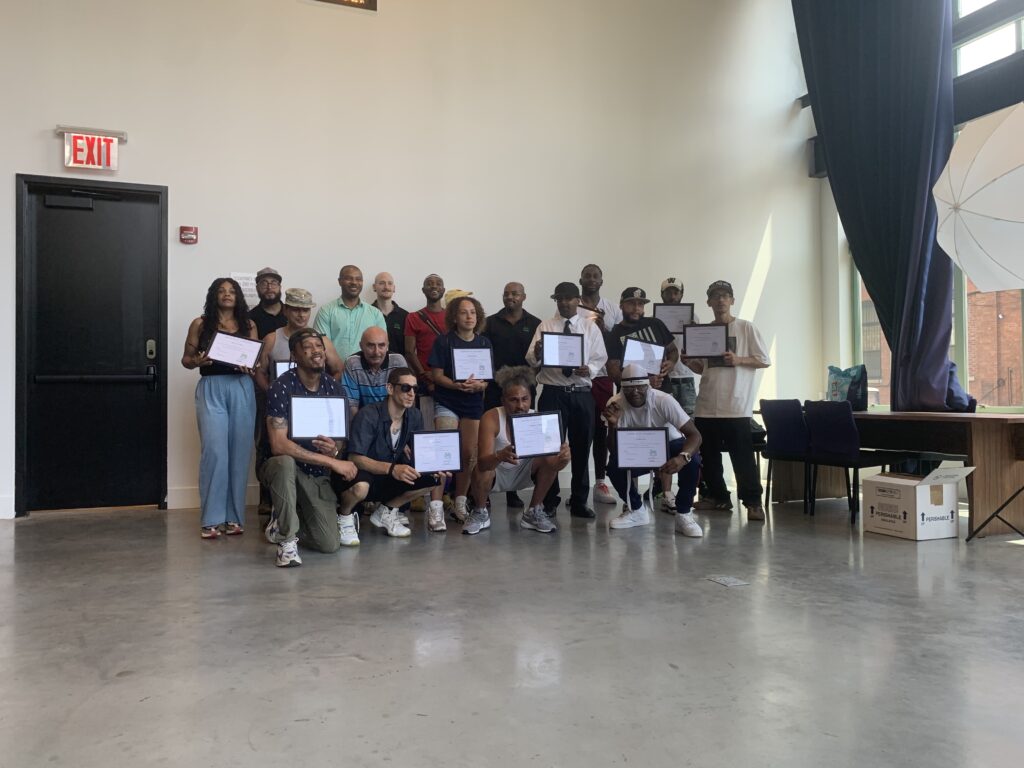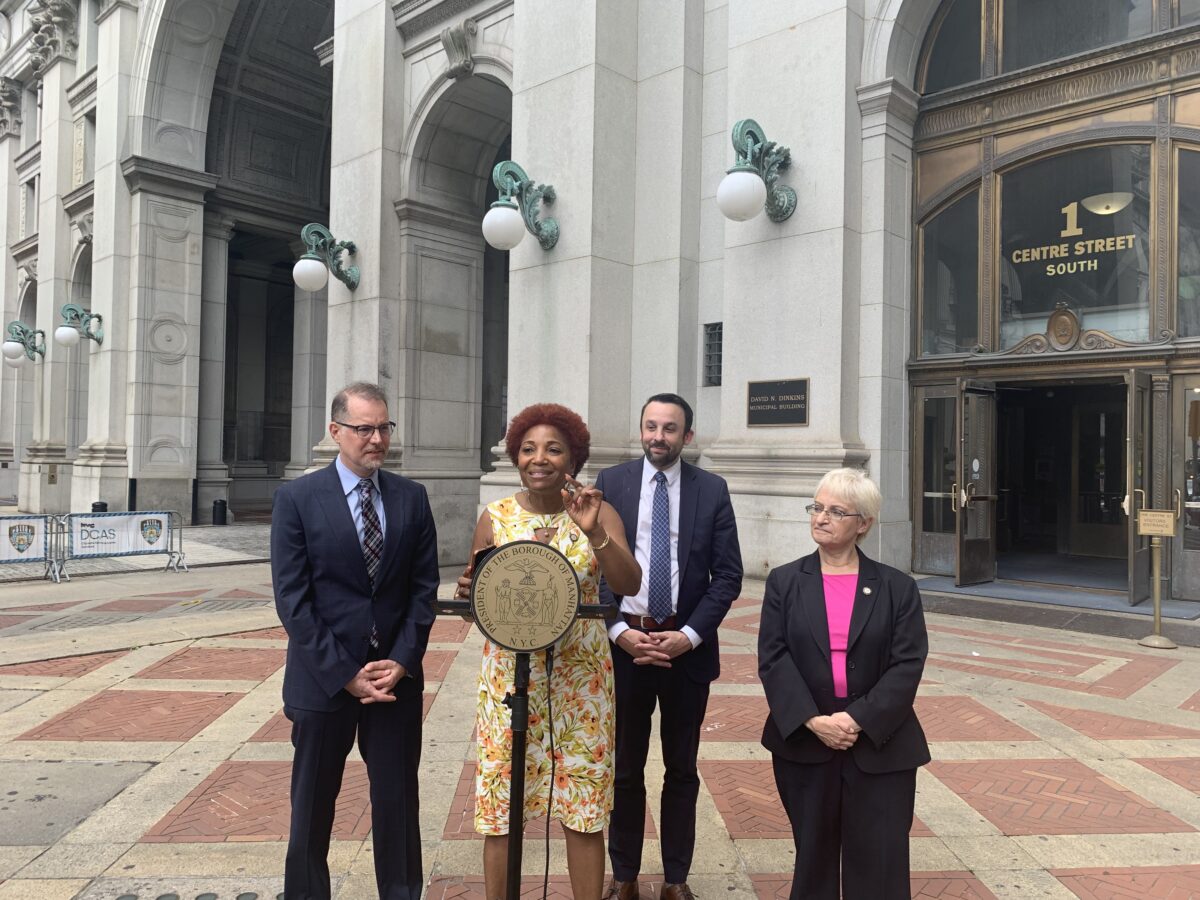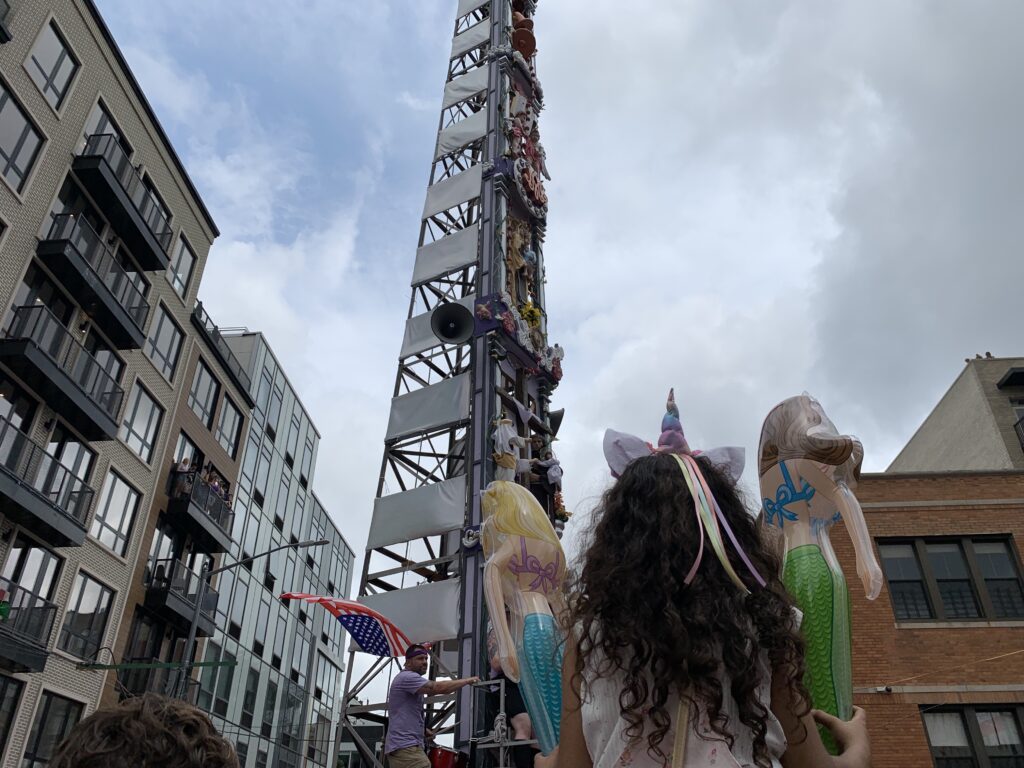City Rolls Out New Gun Violence Prevention Plan
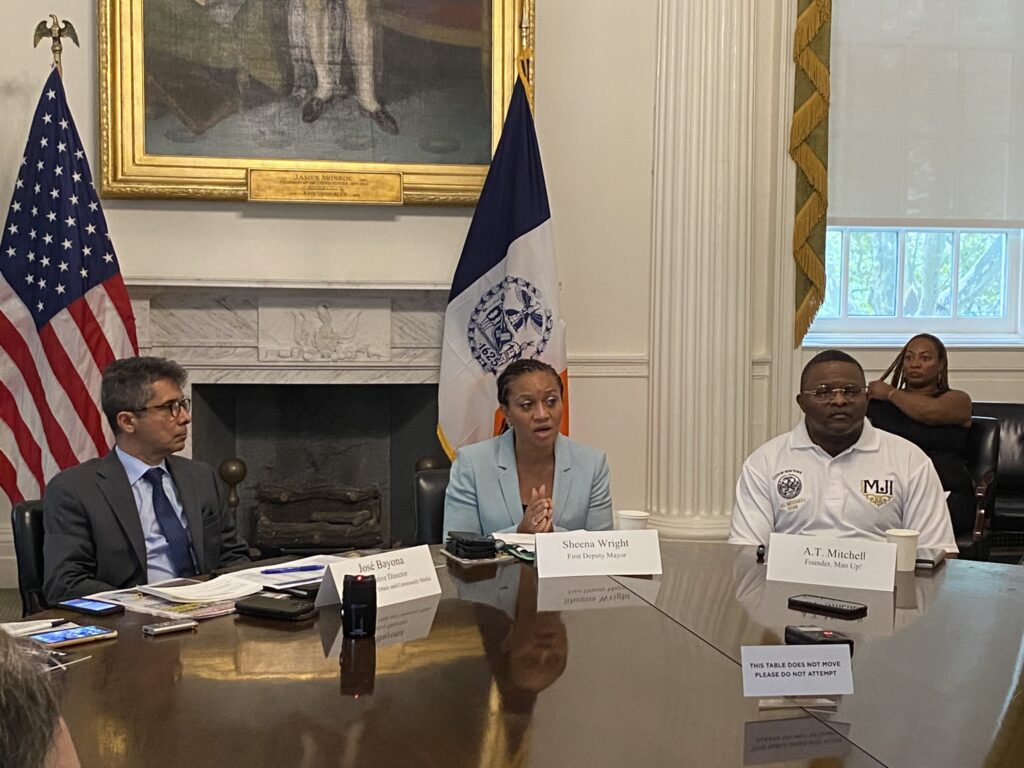
First Deputy Mayor Sheena Wright and “Man Up!” co-founder A.T. Mitchell explaining the blueprint.
By Anna Di Iorio-Reyes and Carmo Moniz | news@queensledger.com
The city’s most recent investment in gun violence prevention, totalling $485 million, will go toward youth programs, employment opportunities, housing and mental health care in its most vulnerable communities.
Mayor Eric Adams’ administration announced the new plan, called “A Blueprint for Community Safety,” on July 31. It is an extension of Adams’ previous “Blueprint to End Gun Violence,” which was released in early 2022.
The blueprint designates six precincts, four in the Bronx and two in Brooklyn, as priority areas for funding. These areas are responsible for 39% of recorded shots fired in the city, and were chosen based on factors like childhood poverty rates, rent burden, unemployment, income and school absenteeism, according to the blueprint.
While the blueprint boasts an impressive budget, most of its funding is not new. Of the $485 million included in the plan, $443 million had already been planned for use, according to Gothamist.
At a roundtable event, First Deputy Mayor Sheena Wright and “Man Up!” co-founder A.T. Mitchell, who co-chairs the Gun Violence Prevention Task Force that created the blueprint, said that every city agency was asked to contribute to the plan.
“It will mean nothing if we don’t apply these and make sure that these things are real,” Mitchell said. “Those communities out there are waiting for us, they are counting on us for this administration to get it right.”
The plan has seven focus areas: navigation and benefits, housing, employment and entrepreneurship, trauma-informed care, early intervention, community and police relations and community vitality. Of the seven, early intervention and employment programs take up the most funding, at $118.3 million and $118.5 million, respectively. Community-police relations received the least funding of all the focus areas, at $2.6 million.
Funding for early intervention, designed for young people at risk of becoming involved in gun violence, will go toward support for parents, gun violence education, mentorship initiatives and other programming. The blueprint also includes programs to help young people and formerly incarcerated people access job training and employment.
The plan’s housing budget will go toward improving the quality and security of public housing and developing 3,000 affordable homes by 2025. While housing takes up a significant amount of the funding in the blueprint, those $57.5 million are only a fraction of the over $78 billion the New York City Housing Authority, which runs the city’s public housing, has said it needs to renovate its buildings.
Throughout February and March, the task force took input from Brooklyn and Bronx residents to inform the blueprint.
Wright said that the task force will monitor the number of housing units being built, employment rates, shooting deaths and other factors in each of the six most affected precincts to determine the success of different programs over the next several years.
“We’re going to be working on the ground with the community, making sure that we’re accountable for results,” Wright said. “We’re gonna evolve and get better and better.”
In addition to more extensive monitoring, the blueprint also proposes meetings where local residents in the six prioritized precincts can review collected data and engage with the results directly.
“This is a living document, and no two plans for those neighborhoods will look alike, because they will be tailored specifically for those neighborhoods in those communities,” Mitchell said. “Rome wasn’t built in a day. These communities have suffered decades of disinvestment and we can’t expect miracles to happen overnight.”


